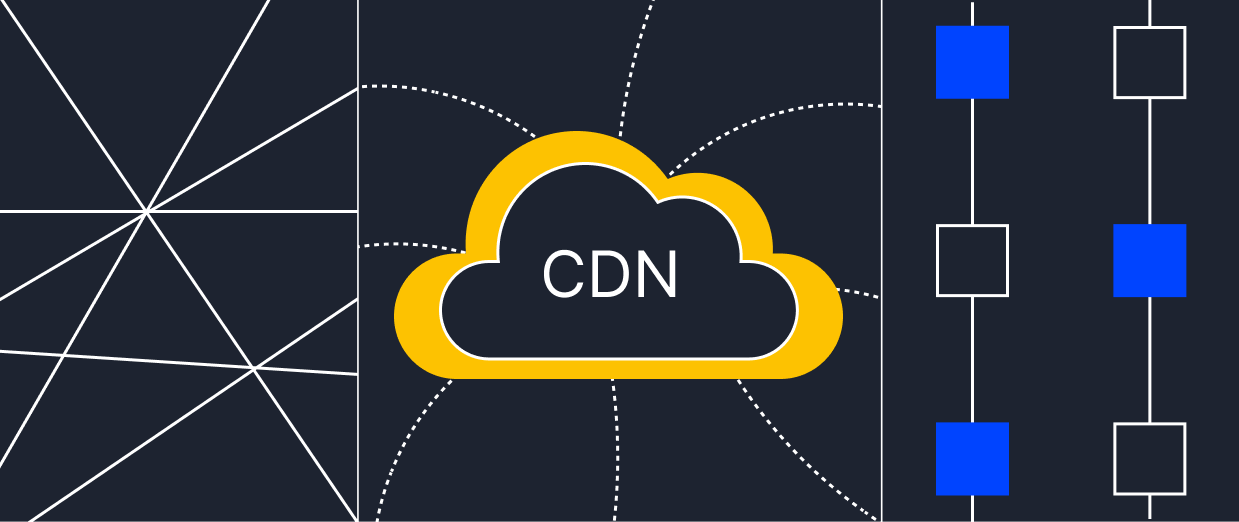CDN
CDN (Content Delivery Network) — is a distributed network of servers designed to efficiently deliver content to users. CDN improves the user experience by reducing the time it takes to download content from the network, balancing the load on servers and increasing resource availability.

Main aspects of CDN operation
- Geographic distribution of servers:
CDN servers are located in different geographical locations around the world, which helps to reduce the delay in content delivery. The server closest to the user quickly delivers the requested data, minimizing transmission time.. - Content caching:
Caching is a basic mechanism of CDN operation where frequently requested resources (e.g. images, videos, CSS and JavaScript files) are stored temporarily on CDN servers. In case of repeated requests, the content is taken from the cache, which significantly speeds up downloading. - Load balancing:
CDN helps to distribute traffic across multiple servers, which prevents individual servers from overloading and increases resilience to sudden load peaks. - Improving availability and fault tolerance:
In case one or more CDN servers go down, other servers can pick up serving requests. This significantly increases content availability. - Defense against DOoS (Distributed Denial of Service) attacks:
CDNs often include mechanisms to defend against DDoS attacks by distributing traffic and filtering malicious requests, which helps protect the origin server from overload and failure.
How CDN works
First comes the user request - When a user requests a resource (such as a web page, video or image), the request is sent to the server closest to the user's location (point of presence, PoP).
The cache is then accessed - The CDN server checks the cache for the presence of the requested resource. If the resource is found, it is immediately sent to the user.
The last step, a request to the root server - If the resource is not found in the CDN cache, the CDN server contacts the primary server (origination server) to retrieve the content. Once the content is retrieved, the CDN server stores a copy in the cache and sends the resource to the user.
Examples of CDN usage
Media: Video platforms such as YouTube and Netflix use CDNs to deliver video content with minimal latency.
E-commerce: Online retailers such as Amazon use CDNs to quickly download pages, images, and other static resources.
High-traffic websites: News sites, blogs, and social networks use CDNs to speed up page loads and increase resilience to peak loads.
Examples of popular CDN providers:
- Serverspace
- Akamai
- Cloudflare
- Amazon CloudFront
- Fastly
- Google Cloud CDN
CDN Serverspace
Cloud provider Serverspace has added to the list of cloud services by integrating CDN (Content Delivery Network) - a content delivery system. The service gives users two options for connecting their domain to the CDN: through zone delegation or by setting up A- and CNAME records. This gives users the freedom to choose how best to integrate the CDN into their current structure.
How do I connect a domain to the Serverspace CDN?
- create an account in Serverspace or log in to the control panel;
- go to the CDN tab and select the connection method: via zone delegation or via CNAME record;
- follow the instructions in the panel;
- press the “Connect” button.
* Instructions are available in the Control Panel in the CDN Settings section.


